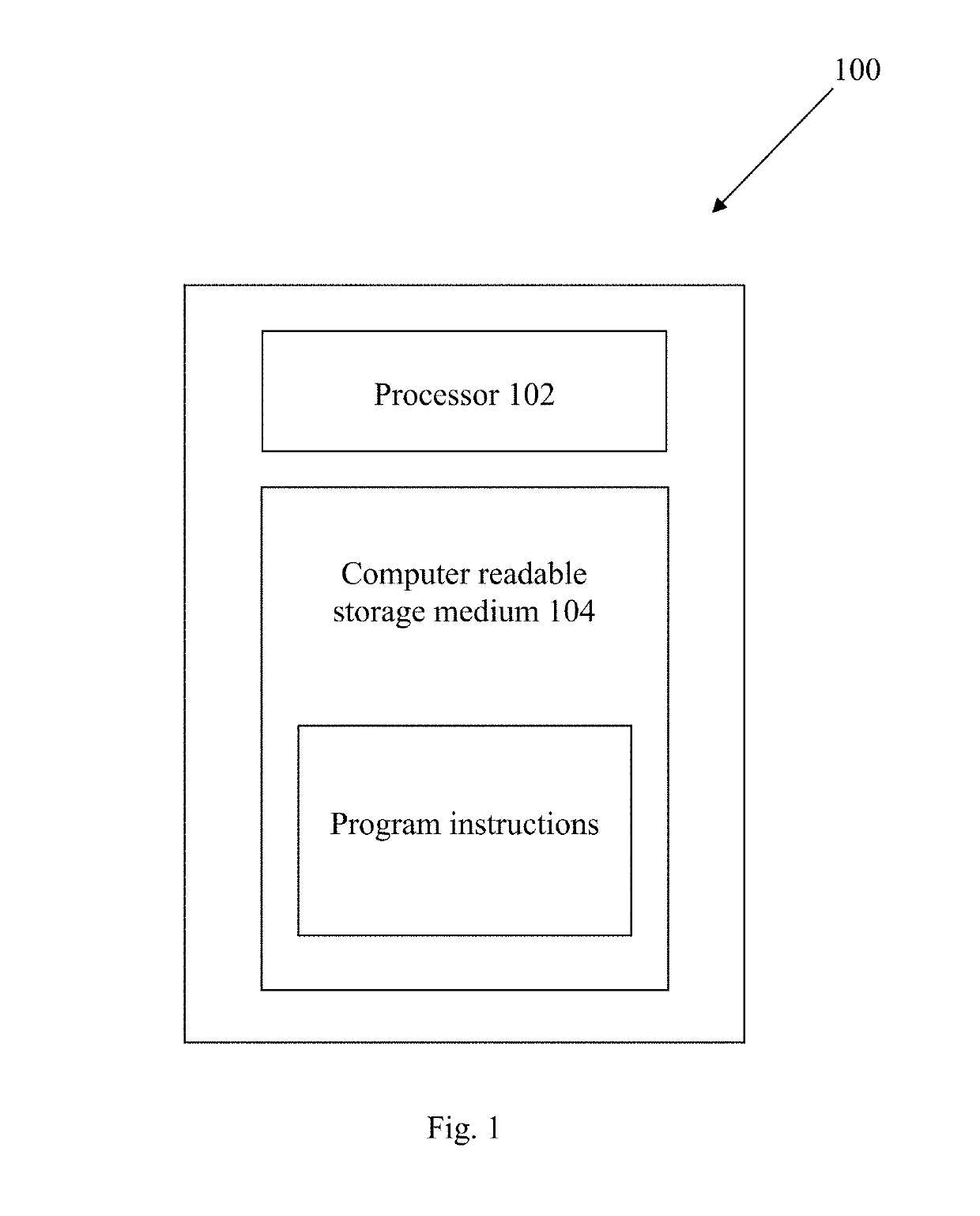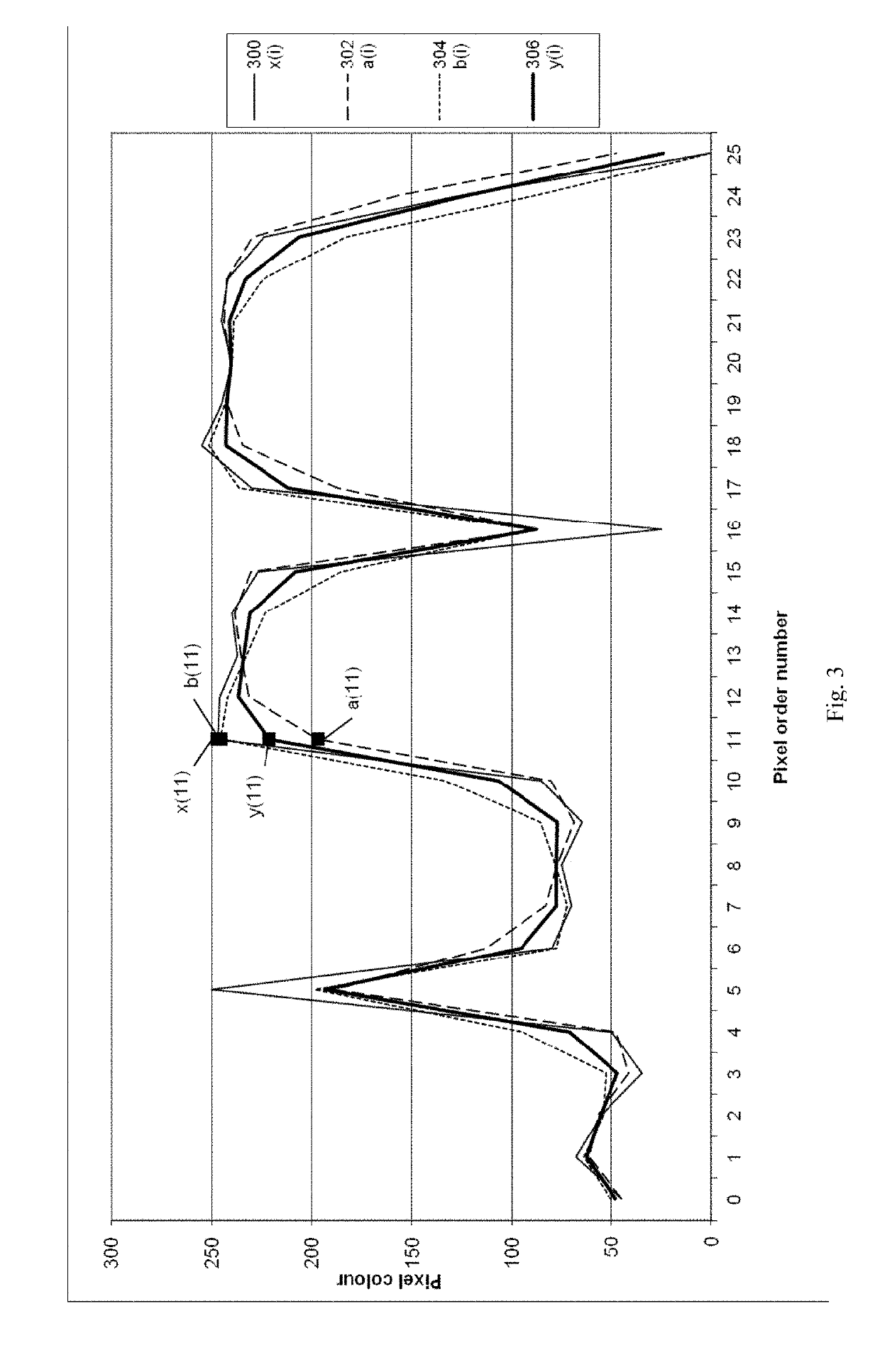Processing a digital image
a digital image and image processing technology, applied in image data processing, instruments, computing, etc., can solve the problems of reducing the computational complexity of algorithms from r*r to r*r, requiring quite a lot of time, and image smoothing is the most time-consuming and computer-intensive task
- Summary
- Abstract
- Description
- Claims
- Application Information
AI Technical Summary
Benefits of technology
Problems solved by technology
Method used
Image
Examples
Embodiment Construction
[0017]In order to explain the invention, this description begins with more detailed information about the method of processing a digital image using exponentially weighted moving average technique, emphasizing the points causing drawbacks of the method.
[0018]It should be noted that exponentially weighted moving average uses one-dimensional data array rather than two-dimensional one, so it should be used for image processing as a separable kernel, i.e. should be applied twice consecutively—once to rows of initial pixels, and the second time to columns of resulting pixels or in reverse order. In view of the foregoing, hereinafter we will only describe operations for one-dimensional array.
[0019]In the most general case, an exponentially weighted moving average is calculated according to the equation
a(i)=a(i−1)*w+x(i)*(1−w),
[0020]where i is an index of the value of the input value array, 0≤i
[0021]The said method results in partial transfer of the input data i...
PUM
 Login to View More
Login to View More Abstract
Description
Claims
Application Information
 Login to View More
Login to View More - R&D
- Intellectual Property
- Life Sciences
- Materials
- Tech Scout
- Unparalleled Data Quality
- Higher Quality Content
- 60% Fewer Hallucinations
Browse by: Latest US Patents, China's latest patents, Technical Efficacy Thesaurus, Application Domain, Technology Topic, Popular Technical Reports.
© 2025 PatSnap. All rights reserved.Legal|Privacy policy|Modern Slavery Act Transparency Statement|Sitemap|About US| Contact US: help@patsnap.com



